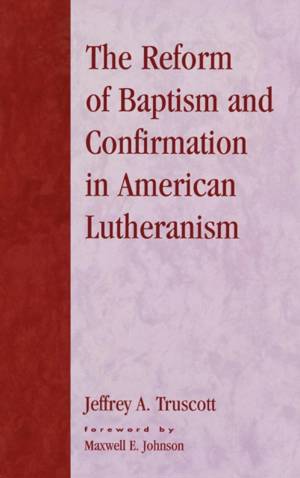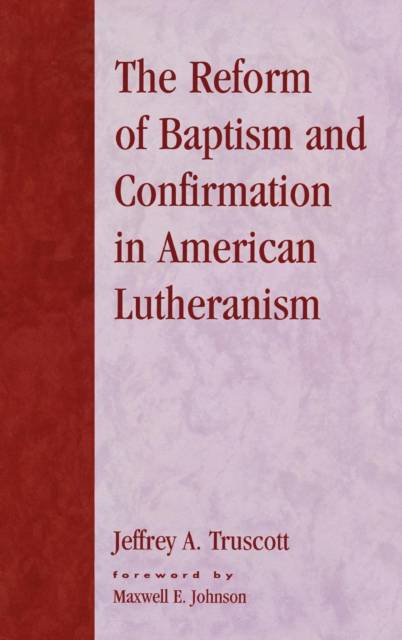
- Afhalen na 1 uur in een winkel met voorraad
- Gratis thuislevering in België vanaf € 30
- Ruim aanbod met 7 miljoen producten
- Afhalen na 1 uur in een winkel met voorraad
- Gratis thuislevering in België vanaf € 30
- Ruim aanbod met 7 miljoen producten
Zoeken
The Reform of Baptism and Confirmation in American Lutheranism
Jeffrey a Truscott
€ 145,45
+ 290 punten
Omschrijving
This resource examines the historical and theological background of the rites used for baptism and confirmation in the Lutheran Book of Worship (1978). The introduction of the LBW as the standard book in Lutheran worship not only provided North American Lutherans with a new rite for baptism but also new understandings of the meaning of baptism. Baptism was suddenly seen as being central to Christian identity, rather than merely serving as an infant rite of passage performed occasionally in private. It also allowed for full participation of the liturgical assembly and employed a greater use of ritual and gesture. Simultaneously, the greater stress on baptism was accompanied by an attempt to downplay the theological and liturgical importance of confirmation, the centerpiece of Lutheran spiritual formation for those persons baptized in infancy. Confirmation was revised as the "Affirmation of Baptism", allowing it only a secondary role as a part of the original rite of baptism. Truscott argues that these changes have affected how North American Lutherans think about and practice Christian initiation. He also critically evaluates the LBW rites and makes proposals for the future renewal of Christian initiation in North American Lutheranism.
Specificaties
Betrokkenen
- Auteur(s):
- Uitgeverij:
Inhoud
- Aantal bladzijden:
- 338
- Taal:
- Engels
- Reeks:
- Reeksnummer:
- nr. 11
Eigenschappen
- Productcode (EAN):
- 9780810848795
- Verschijningsdatum:
- 1/11/2003
- Uitvoering:
- Hardcover
- Formaat:
- Genaaid
- Afmetingen:
- 140 mm x 223 mm
- Gewicht:
- 544 g

Alleen bij Standaard Boekhandel
+ 290 punten op je klantenkaart van Standaard Boekhandel
Beoordelingen
We publiceren alleen reviews die voldoen aan de voorwaarden voor reviews. Bekijk onze voorwaarden voor reviews.











